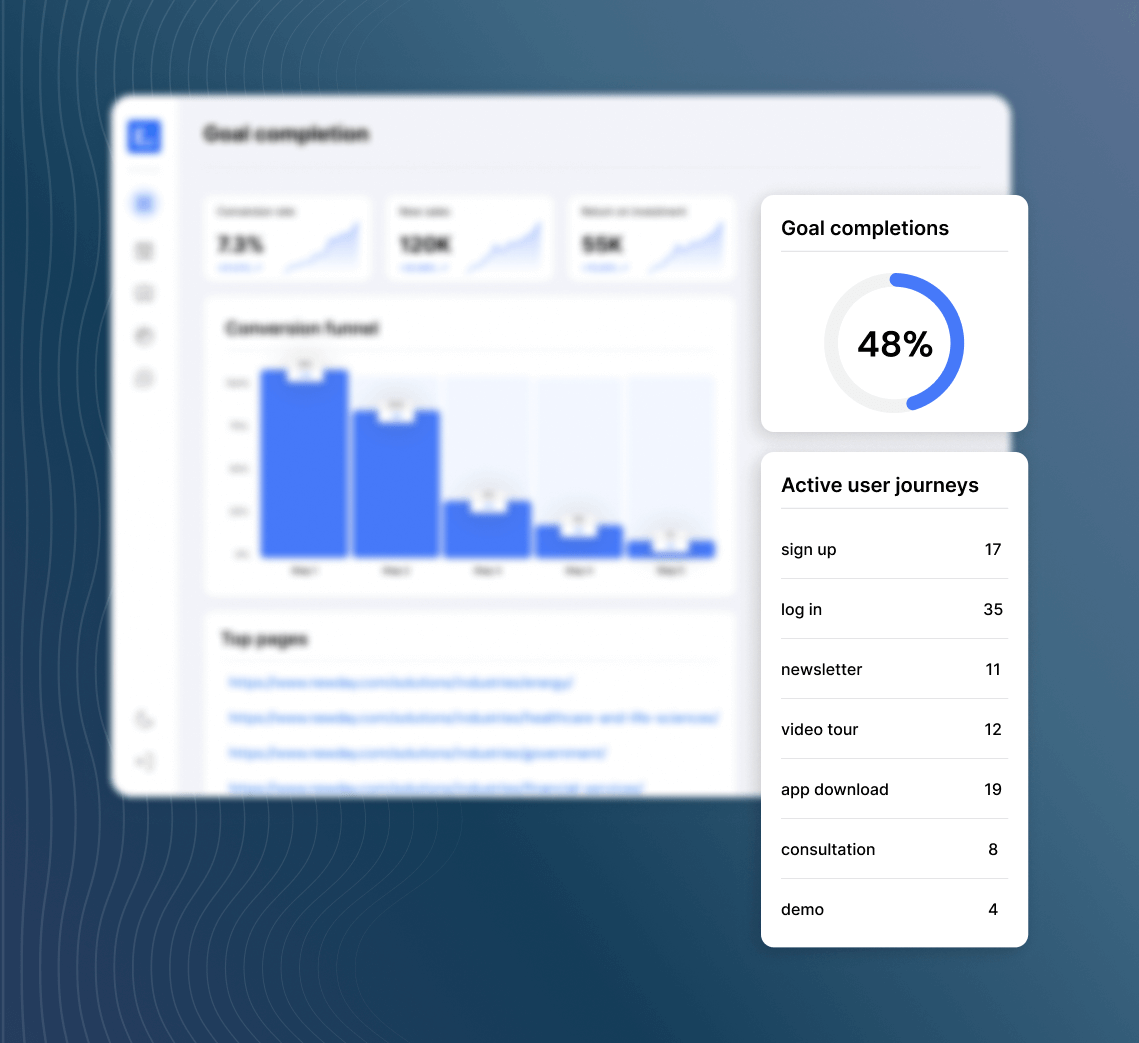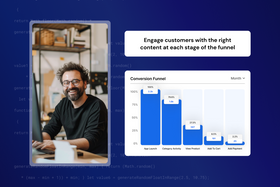How to improve content marketing ROI: 6 proven strategies
Discover proven strategies to skyrocket your content marketing ROI and drive real results.
Updated March 5, 2025

Content marketing return on investment (ROI) measures the effectiveness of your content by comparing how much you invest with what you earn—all in an effort to ensure the time and money you put into your content pays off. And with the marketing landscape constantly changing and budgets tightening, maximizing your content marketing ROI is more important than ever. Every piece of content needs to deliver results. So, if you're creating content, you have to know how to make it count, and I'm here to show you how.
Key takeaways
- ROI varies by industry, so research what type of content marketing works best for your business.
- Use relevant CTAs throughout your content to support the user journey and maximize conversions.
- To improve ROI, you need to be able to attribute value to every step of the user journey.
- Balance quality and quantity and adopt an omnichannel approach to boost the impact of your content marketing activities.
How to measure content marketing ROI
ROI is one of the most important content marketing KPIs to track. Measuring content marketing ROI starts with calculating your content marketing costs and the revenue generated from your content. Once you have those numbers, plug them into this formula:
So, if you spent $5,000 and generated $20,000 in sales, your ROI would be 300%—a great return
Unfortunately, measuring content marketing ROI usually isn't that easy. The challenge is figuring out the exact amount you've invested and what returns are directly tied to your content. I won't go into specifics here, but I cover this in more detail in our article on how to measure content marketing ROI if you'd like to learn more.
» Learn how to measure SEO ROI.
6 strategies to improve content marketing ROI
The following strategies will help you focus your efforts and make the most out of your content marketing activities.
1. Find the type of content marketing that works for you
The first thing I would look at is whether you're creating the right content for your industry. Are you in health or finance, where informational content plays a large role in the purchase decision? Are you in fashion, where visual content on social media platforms like Instagram is more effective? Or maybe you're in a service-based industry like moving or locksmith services, where there's lots of content to create, but conversions come from a very narrow set of keywords like "locksmith near me." Every industry requires a different approach.
Look at the keywords that drive conversions in your industry. Do you have a lot of bottom-of-the-funnel keywords to target? By checking this, you can understand what content you need to create and which channel to create it for (e.g., written content for SEO or visual content for social media).
Then, research how to structure your content effectively. Do you have a lot of conversion keywords? Are they informational or product keywords? The type of content you create and how you structure it will depend on what you're selling and the type of keywords you're targeting.
» Discover the most effective types of content marketing.
2. Understand how your content is supposed to drive conversions
Next, you need to understand how your content is meant to drive conversions. Is it part of the decision-making process, or is it primarily educational? Think about what motivates your audience. For instance, if you sell jewelry, people are more likely to purchase your product on a whim just because they like how it looks. In these cases, your content should be mostly visual to showcase your product in an enticing way.
» Explore winning content marketing strategies for e-commerce.
On the other hand, those looking to purchase a product that requires a bigger investment and, therefore, more consideration would need more information first. So, if you sell high-ticket items like cars, your content should answer questions about specific features like seating capacity, fuel consumption, and safety ratings. By providing information that guides potential buyers through their decision-making process and down your sales funnel, you build trust and drive conversions.
» Discover expert strategies for creating content that converts.
3. Add relevant CTAs that support the user journey
When people consume content, they often click on links related to what they're reading or watching. So, by strategically placing clear, compelling calls to action (CTAs) throughout your content, you can dramatically increase your conversion rates. For example, in written SEO content, you can achieve click-through rates of over 45% and improve your SEO ROI when you add relevant CTAs that support users at each stage of their journey.
4. Find a better way to track and attribute sales
To improve your content marketing ROI, you need to track and attribute sales accurately. While tools like Google Analytics can help to a certain point, it becomes challenging if you're dealing with multiple pieces of content across many pages. You need to identify what actually drives conversions, whether it's a link, a specific page, or a combination of factors.
Entail CRO can solve this problem with its goal attribution model by helping you pinpoint the content that supports the user journey and leads to sales. By tracking this, you can focus on the content that converts and improves ROI.
» Learn to optimize complex user journeys for conversion with multi-touch attribution.
5. Balance quality and quantity
In this day and age where AI is so prevalent, it's not about "quality over quantity" anymore—you need both. High-quality content keeps your audience engaged, while a consistent flow of content helps you stay relevant and visible.
Look at how top brands operate. They post new, high-quality content daily. Their content looks polished, and they post frequently because they know content doesn't have the long shelf life it used to. To keep up, you need to streamline and scale your content creation process and consistently produce quality material. Using content editing best practices and tools like Entail CMS plugin can help you manage this balance effectively.
6. Adopt an omnichannel marketing approach
It's no longer enough to create content for just one platform. Today, there are many channels—SEO, paid ads, and various social media platforms—and you can repurpose content across all of them. This allows you to get the most out of each piece of content while reaching a broader audience.
Users often need to interact with your brand multiple times before they're ready to buy. This means you need to create multiple touchpoints, whether it's through an ad, a social media post, or an email. Using an omnichannel content marketing strategy ensures that your audience is exposed to your brand in different ways, which also helps build trust and increase the chances of conversion.
» Discover whether SEO or PPC is a better investment.
Boost ROI with every content piece
In a world where content is everywhere, the real challenge isn't just creating content—it's making sure it works. Every strategy you implement, whether it's understanding your audience, balancing quality with quantity, or leveraging multiple channels, should be focused on driving tangible results. But here's the key question: Are you doing enough to ensure your content is part of a meaningful user journey? If not, it's time to rethink how you're approaching content and its role in achieving your business goals.






